Infiniti G35 2003 Manual

Foreword
Your INFINITI represents a new way of thinking about vehicle design. It integrates advanced engineering and superior craftsmanship with a simple, refined aesthetic sensitivity associated with traditional Japanese culture.
The result is a different notion of luxury and beauty. The car itself is important, but so is the sense of harmony that the vehicle evokes in its driver, and the sense of satisfaction you feel with the INFINITI Ð from the way it looks and drives to the high level of retailer service.
To ensure that you enjoy your INFINITI to the fullest, we encourage you to read this Owner's Manual immediately. It explains all of the features, controls and performance characteristics of your INFINITI; it also provides important instructions and safety information.
A separate Warranty Information Booklet can be found in your Owner's literature portfolio. Always carry it with you when you take your INFINITI to an authorized retailer. The portfolio contents provide complete information about all warranties covering this vehicle, the periodic maintenance required to keep the warranties in effect as well as the INFINITI Roadside Assistance program.
Additionally, a separate Customer Care and Lemon Law Information Booklet will explain how to resolve any concerns you may have with your vehicle, as well as clarify your rights under your state's lemon law.
INFINITI is dedicated to providing a satisfying ownership experience for as long as you own your car. Should you have any questions regarding your INFINITI or your INFINITI dealer, please contact our Consumer Affairs department at 1-800-662-6200. In Hawaii 1-808-836-0888 (Oahu number). In Canada 1-800-361-4792. Thank you.
READ FIRST Ð THEN DRIVE SAFELY
Before driving your vehicle please read your Owner's Manual carefully. This will ensure familiarity with controls and maintenance requirements, assisting you in the safe operation of your vehicle.
 WARNING
WARNING
IMPORTANT SAFETY INFORMATION REMINDERS FOR SAFETY!
Follow these important driving rules to help ensure a safe and comfortable trip for you and your passengers!
ONever drive under the influence of alcohol or drugs.
OAlways observe posted speed limits and never drive too fast for conditions.
OAlways use your seat belts and appropriate child restraint systems. Preteen children should be seated in the rear seat.
OAlways provide information about the proper use of vehicle safety features to all occupants of the vehicle.
OAlways review this Owner's Manual for important safety information.
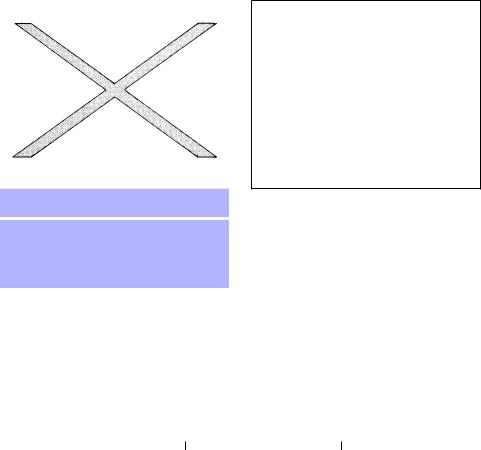
MODIFICATION OF YOUR
VEHICLE
This vehicle should not be modified. Modification could affect its performance, safety or durability, and may even violate governmental regulations. In addition, damage or performance problems resulting from modifications may not be covered under INFINITI warranties.
WHEN READING THE MANUAL
This manual includes information for all options available on this model. Therefore, you may find some information that does not apply to your vehicle.
All information, specifications and illustrations in this manual are those in effect at the time of printing. INFINITI reserves the right to change specifications or design at any time without notice.
IMPORTANT INFORMATION ABOUT THIS MANUAL
You will see various symbols in this manual. They are used in the following ways:
 WARNING
WARNING
This is used to indicate the presence of a hazard that could cause death or serious personal injury. To avoid or reduce the risk, the procedures must be followed precisely.
 CAUTION
CAUTION
This is used to indicate the presence of a hazard that could cause minor or moderate personal injury or damage to your vehicle. To avoid or reduce the risk, the procedures must be followed carefully.
SIC0697
If you see this symbol, it means Do not do this or Do not let this happen.
If you see a symbol similar to these in an illustration, it means the arrow points to the front of the vehicle.
Arrows in an illustration that are similar to these indicate movement or action.
Arrows in an illustration that are similar to these call attention to an item in the illustration.

CALIFORNIA PROPOSITION 65 WARNING
 WARNING
WARNING
Engine exhaust, some of its constituents, and certain vehicle components contain or emit chemicals known to the State of California to cause cancer and birth defects or other reproductive harm. In addition, certain fluids contained in vehicles and certain products of component wear contain or emit chemicals known to the State of California to cause cancer and birth defects or other reproductive harm.
© 2004 NISSAN MOTOR CO., LTD.
TOKYO, JAPAN
All rights reserved. No part of this Owner's Manual may be reproduced or stored in a retrieval system, or transmitted in any form, or by any means, electronic, mechanical, photocopying, recording or otherwise, without the prior written permission of Nissan Motor Co., Ltd.

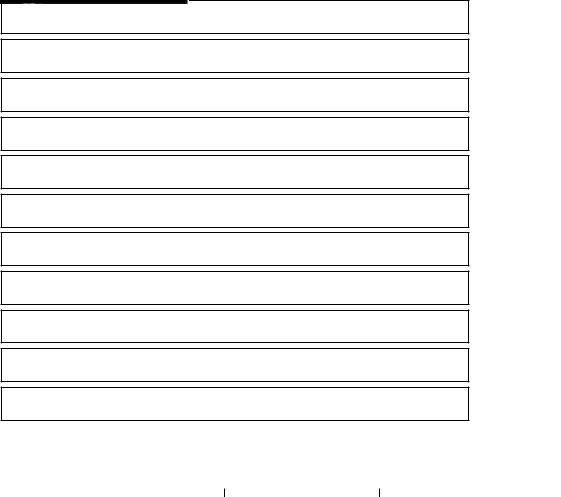
Table of
Contents
Illustrated table of contents
Safety Ð Seats, seat belts and supplemental air bags
Instruments and controls
Pre-driving checks and adjustments
Heater, air conditioner and audio systems
Starting and driving
In case of emergency
Appearance and care
Maintenance and do-it-yourself
Technical and consumer information
Index


0 Illustrated table of contents
Exterior ...................................................................... |
0-2 |
Instrument panel ....................................................... |
0-6 |
Sedan ................................................................... |
0-2 |
Meters and gauges ................................................... |
0-7 |
Coupe ................................................................... |
0-3 |
Engine compartment locations.................................. |
0-8 |
Passenger compartment ........................................... |
0-4 |
|
|
Sedan ................................................................... |
0-4 |
|
|
Coupe ................................................................... |
0-5 |
|
|

EXTERIOR
SEDAN
1. Engine hood (Page 3-9)
2. Headlight and turn signal switch (P.2-18)
3. Windshield wiper and washer switch
(P.2-17)
4. Windshield (P.8-19)
5. Sunroof (P.2-37)
6. Power windows (P.2-34)
7. Towing hook (P.6-12)
8. Fog light switch (P.2-22)
9. Front side marker light (P.8-29)
10. Tire pressure (P.8-33)
11. Flat tire (P.6-2)
12. Tire chains (P.8-38)
13. Mirrors (P.3-16)
14. Door locks, keyfob, keys (P.3-3)
15. Trunk lid (P.3-10)
16. Interior trunk lid release (P.3-11)
17. Rear window defogger switch (P.2-18)
18. Fuel filler lid (P.3-12)
19. Rear combination light (P.8-29)
20. Child safety locks (P.3-5)
SSI0004
0-2 Illustrated table of contents
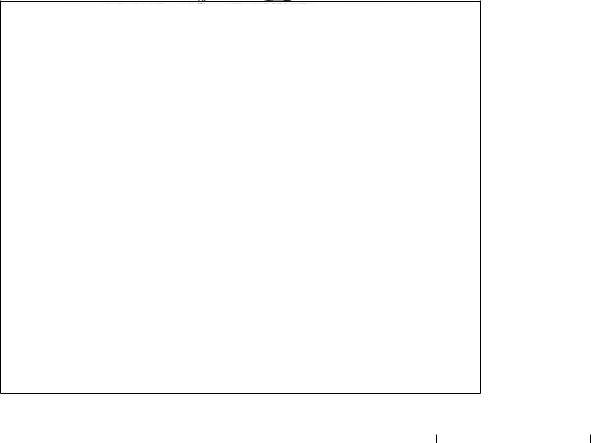
COUPE
1.Engine hood (P.3-9)
2.Headlight and turn signal switch (P.2-18)
3.Windshield wiper and washer switch (P.2-17)
4.Windshield (P.8-19)
5.Sunroof (P.2-37)
6.Power windows (P.2-34)
7.Towing hook (P.6-12)
8.Fog light switch (P.2-22)
9.Front side marker light (P.8-29)
10.Tire pressure (P.8-33)
11.Flat tire (P.6-2)
12.Tire chains (P.8-38)
13.Mirrors (P.3-16)
14.Door locks, keyfob, keys (P.3-3)
15.Trunk lid (P.3-10)
16.Interior trunk lid release (P.3-11)
17.Rear window defogger switch (P.2-18)
18.Fuel filler lid (P.3-12)
19.Rear combination light (P.8-29)
SSI0005
Illustrated table of contents 0-3

PASSENGER COMPARTMENT
SEDAN
1. Automatic anti-glare mirror, HomeLink
(P.3-16, 2-40)
2. Interior lights (P.2-39)
3. Sun visors (P.3-15)
4. Power windows (P.2-34)
5. Front seat (P.1-2)
6. Rear cup holders (P.2-30)
7. Interior trunk access (P.1-8)
8. Front cup holders (P.2-29)
9. Console box (P.2-31)
10. Rear seat (P.1-7)
11. LATCH system (P.1-40)
SSI0006
0-4 Illustrated table of contents

COUPE
1.Automatic anti-glare mirror, HomeLink (P.3-16, 2-40)
2.Interior lights (P.2-39)
3.Sun visors (P.3-15)
4.Power windows (P.2-34)
5.Front seat (P.1-2)
6.Coat hook (P.2-33)
7.Interior trunk access (P.1-8)
8.Parking brake (MT models) (P.5-15)
9.Front cup holders (P.2-29)
10.Console box (P.2-31)
11.Rear cup holders (P.2-29)
12.Rear seat (P.1-7)
13.LATCH system (P.1-40)
SSI0007
Illustrated table of contents 0-5
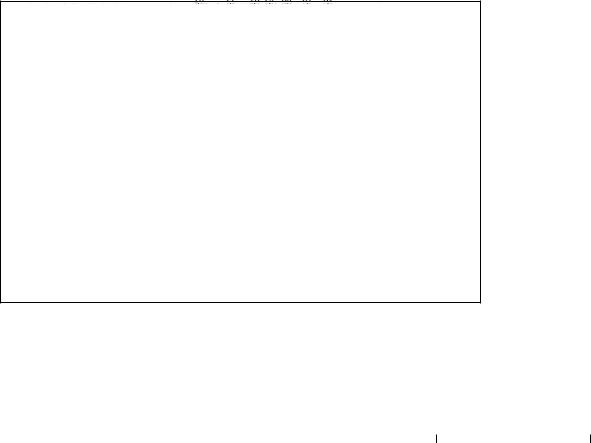
INSTRUMENT PANEL
SSI0017
1.Headlight, fog light and turn signal switch (P.2-18)
2.Steering switch for audio control (P.4-17)
3.Driver supplemental air bag (P.1-11)/Horn (P.2-23)
4.Meters/gauges (P.2-3)
5.Cruise control main/set switch (P.5-16)
0-6 Illustrated table of contents
6.Windshield wiper/washer switch (P.2-17)
7.Center ventilator (P.4-2)
8.Center display - Compass (P.2-6), Air conditioner (P.4-3), Ambient temperature (P.4-5)
9.Rear window and outside mirror (if so equipped) defogger switch (P.2-18)
10.Heater/air conditioner control (P.4-3)
11.Clock (P.2-26)
12.Navigation system* (if so equipped)
13.Security indicator light (P.2-15)
14.Passenger supplemental air bag (P.1-11)
15.Upper glove box (Except for Navigation system equipped models) (P.2-31)
16.Side window defogger
17.Side ventilator (P.4-2)
18.Hood lock release handle (P.3-9)
19.Instrument brightness control switch (P.2-21)
20.Trunk lid release switch (P.3-11)
21.VDC (Vehicle Dynamic Control) OFF switch (P.2-25)
22.Outside mirror remote control (P.3-16)
23.Fuse box (P.8-23)
24.Tilting steering wheel lock lever (P.3-15)
25.Ignition switch/steering lock (P.5-6)
26.Cigarette lighter (P.2-27)
27.Ashtray (P.2-27)/Pocket
28.Radio/cassette player (P.4-6)/CD player (P.4-8)
29.Hazard warning flasher switch (P.2-23)
30.Heated seat switch (P.2-24)
31.Snow mode switch (if so equipped) (P.2-25)
32.Power outlet (P.2-26)
33.Glove box (P.2-30)
*: Refer to the separate Navigation System Owner's Manual.

METERS AND GAUGES
1. Warning/Indicator lights (P.2-9)
2. Speedometer (P.2-3)
3. Tachometer (P.2-4)
4. Engine coolant temperature gauge (P.2-4)
5. Automatic transmission position indicator
(P.5-9)
6. Odometer (Total/Twin trip) (P.2-3)
7. Reset knob for trip odometer (P.2-3)
8. Fuel gauge (P.2-5)
SIC1828
Illustrated table of contents 0-7

ENGINE COMPARTMENT
LOCATIONS
VQ35DE
1. Fuse/fusible link holder (P.8-23)
2. Battery (P.8-16)
3. Engine oil filler cap (P.8-10)
4. Brake fluid reservoir (P.8-14)
5. Clutch fluid reservoir (P.8-14)
6. Power steering fluid reservoir (P.8-13)
7. Engine coolant reservoir (P.8-8)
8. Windshield washer fluid reservoir (P.8-15)
9. Radiator filler cap (P.8-9)
10. Engine oil dipstick (P.8-10)
11. Air cleaner (P.8-19)
SDI1485
0-8 Illustrated table of contents

1Safety Ð Seats, seat belts and supplemental air bags
Seats ......................................................................... |
1-2 |
Front manual seat adjustment ............................. |
1-2 |
Front power seat adjustment (if so equipped) ..... |
1-4 |
Rear seat adjustment ........................................... |
1-7 |
Head restraint adjustment .................................. |
1-10 |
Active head restraint (front seats) ...................... |
1-10 |
Supplemental restraint system................................ |
1-11 |
Precautions on supplemental restraint |
|
system ................................................................ |
1-11 |
Supplemental air bag warning labels ................. |
1-23 |
Supplemental air bag warning light.................... |
1-23 |
Seat belts ................................................................ |
1-25 |
Precautions on seat belt usage ......................... |
1-25 |
Child safety......................................................... |
1-28 |
Pregnant women ................................................ |
1-28 |
Injured persons................................................... |
1-29 |
Three-point type seat belt with retractor ............ |
1-29 |
Seat belt extenders ............................................ |
1-32 |
Seat belt maintenance ....................................... |
1-32 |
Child restraints ........................................................ |
1-33 |
Precautions on child restraints ........................... |
1-33 |
Installation on rear seat outboard or center |
|
positions ............................................................. |
1-35 |
LATCH (Lower Anchors and Tethers for CHildren) |
|
system ................................................................ |
1-40 |
Top tether strap child restraint .......................... |
1-41 |
Installation on front passenger seat ................... |
1-43 |
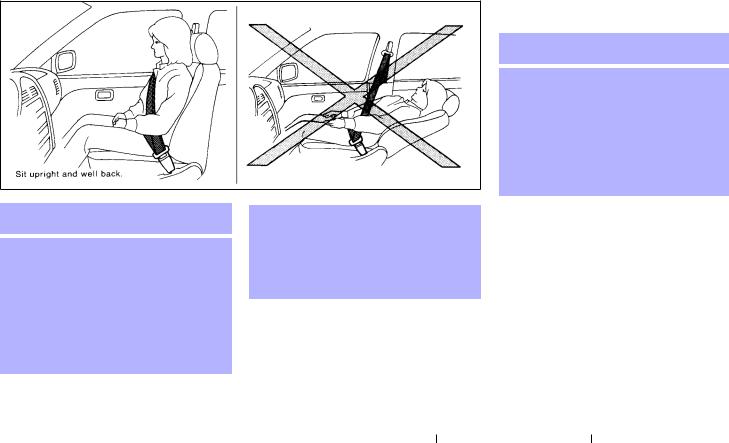
SEATS
SSS0133
 WARNING
WARNING
ODo not ride in a moving vehicle when the seatback is reclined. This can be dangerous. The shoulder belt will not be against your body. In an accident you could be thrown into it and receive neck or other serious injuries. You could also slide under the lap belt and receive serious internal injuries.
OFor most effective protection when the vehicle is in motion, the seat should be upright. Always sit well back in the seat and adjust the seat belt properly. See ªPrecautions on seat belt usageº later in this section.
FRONT MANUAL SEAT
ADJUSTMENT
 WARNING
WARNING
ODo not adjust the driver's seat while driving so full attention may be given to vehicle operation. The seat may move suddenly and could cause loss of control of the vehicle.
OAfter adjustment, gently rock in the seat to make sure it is securely locked.
1-2 Safety Ð Seats, seat belts and supplemental air bags
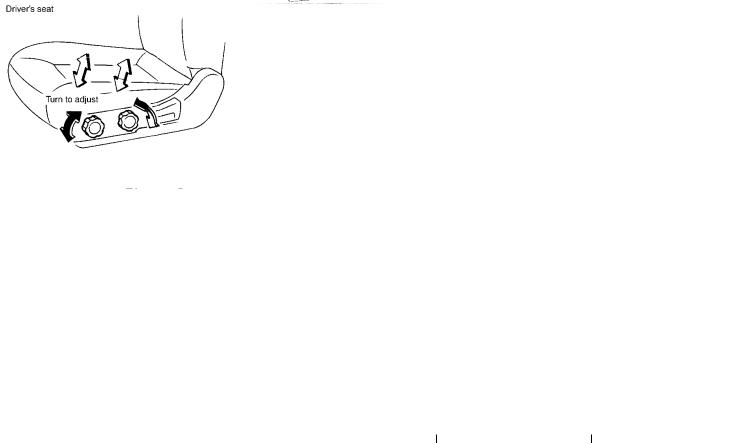
SSS0169 |
|
SSS0168 |
Forward and backward
Pull the lever up while you slide the seat forward or backward to the desired position. Release the lever to lock the seat in position.
Reclining
To recline the seatback, pull the lever up and lean back. To bring the seatback forward again, pull the lever and move your body forward. The seatback will move forward.
The reclining feature allows adjustment of the seatback for occupants of different sizes to help obtain proper seat belt fit. (See ªPrecautions on seat belt usageº later in this section.) Also, the seatback may be reclined to allow occupants to rest when the vehicle is parked.
Seat lifter (if so equipped for driver's seat)
Turn either dial to adjust the angle and height of the seat cushion to the desired position.
Safety Ð Seats, seat belts and supplemental air bags 1-3
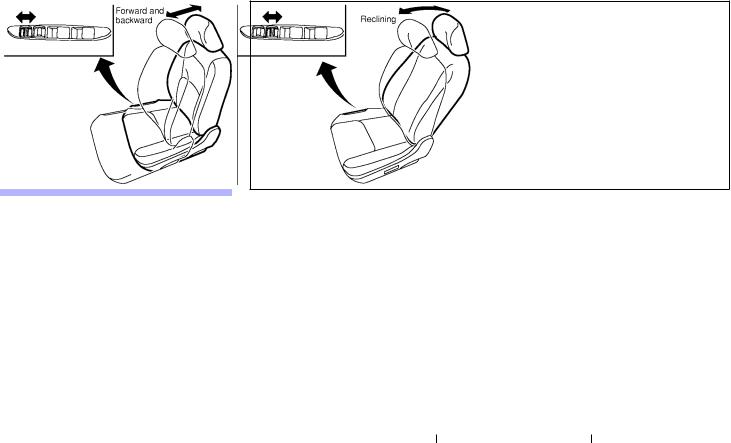
FRONT POWER SEAT
ADJUSTMENT (if so equipped)
 WARNING
WARNING
ODo not adjust the driver's seat while driving so full attention may be given to vehicle operation.
ODo not leave children unattended inside the vehicle. They could unknow-
ingly activate switches or controls. |
|
Unattended children could become |
|
involved in serious accidents. |
SSS0182 |
Operating tips
OThe seat motor has an auto-reset overload protection circuit. If the motor stops during operation, wait 30 seconds, then reactivate the switch.
ODo not operate the power seat for a long period of time when the engine is off. This will discharge the battery.
See ªAutomatic seat positionerº in the ª3. Pre-driving checks and adjustmentsº for automatic seat positioner operation.
Forward and backward (Sedan)
Moving the switch forward or backward will slide the seat forward or backward to the desired position.
Reclining (Sedan)
Move the recline switch backward until the desired angle is obtained. To bring the seatback forward again, move the switch forward and move your body forward. The seatback will move forward.
The reclining feature allows adjustment of the seatback for occupants of different sizes to help obtain proper seat belt fit. (See ªPrecautions on seat belt usageº later in this section.) Also, the seatback may be reclined to allow occupants to rest when the vehicle is parked.
1-4 Safety Ð Seats, seat belts and supplemental air bags
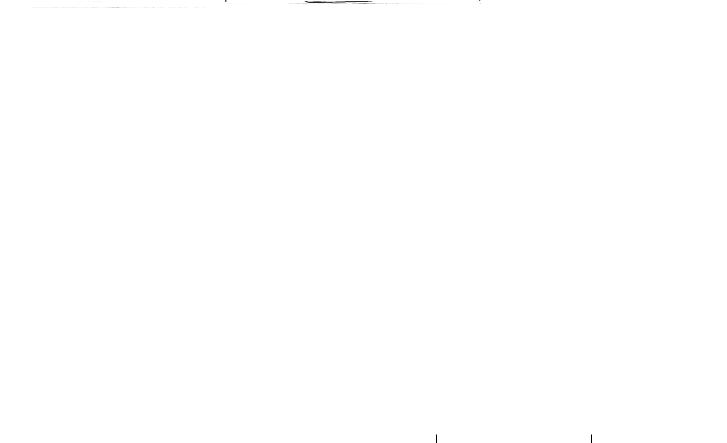
SSS0267 |
|
SSS0268 |
Forward and backward (Coupe)
Moving the switch forward or backward will slide the seat forward or backward to the desired position.
Tilting and reclining (Coupe)
To recline the seatback, pull the lever up and lean back. To bring the seatback forward again, pull the lever up and move your body forward. The seatback will move forward.
To access the rear seat, pull the lever up.
The reclining feature allows adjustment of the seatback for occupants of different sizes to help obtain proper seat belt fit. (See ªPrecautions on seat belt usageº later in this section.) Also, the seatback may be reclined to allow occupants to rest when the vehicle is parked.
The driver's seatback can also be tilted forward by firmly pulling the strap.
Safety Ð Seats, seat belts and supplemental air bags 1-5

SSS0218
Seatback lever (Coupe, front passenger side)
The seatback lever can be used in the same way as the reclining lever on the side of the seat from the driver's seat.
Walk-in mechanism (Coupe)
OWhen the seatback lever or the reclining lever on the side of the seat is pulled upward, the seatback will tilt down, moving the seat forward. This makes it easier to get in and out of the rear seat.
OTo return the seat to its original position, raise the seatback and lock the seat. The seat will return to its original position.
OThe front passenger seat will stop at 7 in (175 mm) from its front most position to retain space for the rear passenger.
 CAUTION
CAUTION
OWhen returning the seat to its original position, confirm the seat and seatback are locked properly.
OBe careful not to pinch your hand or foot or bump your head when operating the walk-in seat. The seatback will fold down rapidly.
ODo not put any objects in front or rear of the seat. They may be pinched and damaged.
The automatic forwarding and reversing will not work or stop under the following conditions:
OWhen the vehicle speed is above 4 MPH (7 km/h).
OWhen the seat belt is fastened.
OWhen the selector lever is not in the P (Park) position (Automatic transmission model's driver's seat) or the parking brake is not applied (Manual transmission model's driver's seat)
OWhen the door is closed.
OWhen the slide adjusting switch is operated.
1-6 Safety Ð Seats, seat belts and supplemental air bags
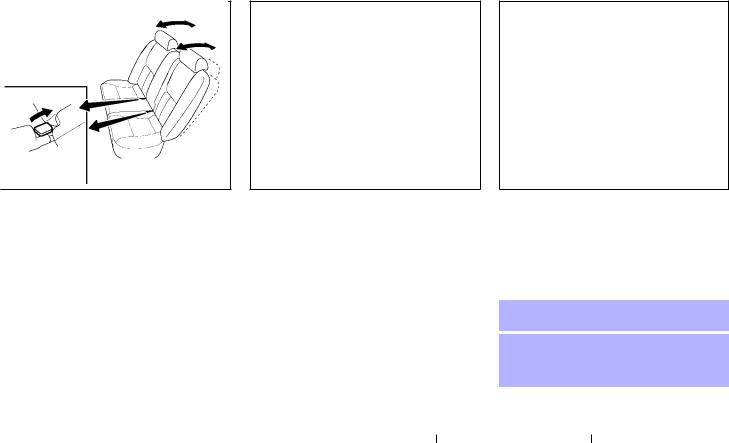
SSS0183
Seat lifter (Driver's seat)
Pull the switch up or push it down to adjust the angle and height of the seat cushion.
SSS0184
Lumbar support (Driver's seat)
The lumbar support feature provides lower back support to the driver. Move the lever up or down to adjust the seat lumbar area.
SSS0185
REAR SEAT ADJUSTMENT
Reclining (if so equipped)
Pull the reclining lever and position the seat back at the desired angle. Release the reclining lever after positioning the seat at the desired angle.
 WARNING
WARNING
ODo not ride in a moving vehicle when the seatback is reclined. This can be dangerous. The shoulder belt will not
Safety Ð Seats, seat belts and supplemental air bags 1-7
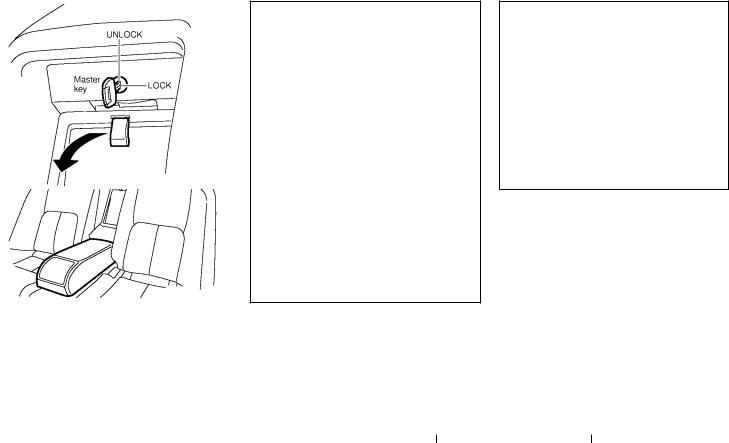
be against your body. In an accident you could be thrown into it and receive neck or other serious injuries. You could also slide under the lap belt and receive serious internal injuries.
OFor the most effective protection when the vehicle is in motion, the seat should be upright. Always sit well back in the seat and adjust the seat belt properly. See ªSeat beltsº later in this section for precautions on seat belt usage.
OAfter adjustment, check to be sure the seat is securely locked.
SSS0186
Armrest (if so equipped)
Pull the armrest forward until it is horizontal.
SSS0187
Interior trunk access
Sedan:
Pull the partition down to access the trunk from the rear seat.
The partition can be locked using the master key to prevent unauthorized access.
Remove the key while opening or closing the partition. Otherwise, the partition may be damaged.
1-8 Safety Ð Seats, seat belts and supplemental air bags

SSS0220
Coupe:
Pull the handle on the left side of the trunk and push the seatback forward to access the trunk from the rear seat.
 WARNING
WARNING
Properly secure all cargo to help prevent it from sliding or shifting. Do not place cargo higher than the seatbacks. In a sudden stop or collision, unsecured cargo could cause personal injury.
SSS0219 |
|
SSS0298 |
When raising the seatback, make sure to lock the seatback. The pop up knob on the seatback will latch in when the seatback is locked.
Safety Ð Seats, seat belts and supplemental air bags 1-9
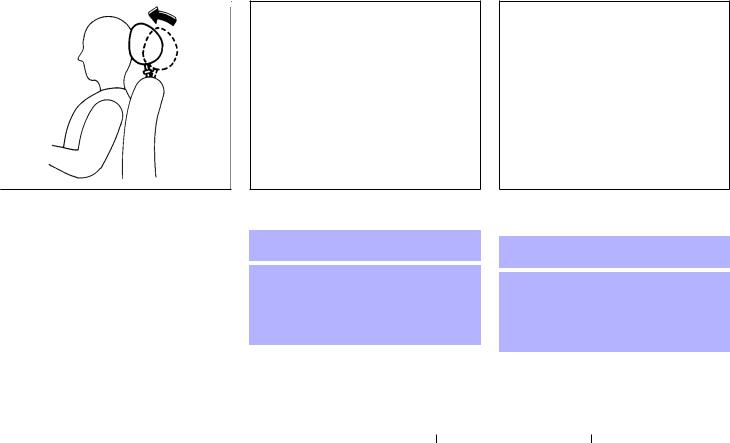
SSS0125
HEAD RESTRAINT ADJUSTMENT
To raise the head restraint, just pull it up. To lower, push the lock knob and push the head restraint down.
SSS0178
Adjust the head restraints so the center is level with the center of your ears.
 WARNING
WARNING
Head restraints should be adjusted properly as they may provide significant protection against injury in an accident. Do not remove them. Check the adjustment after someone else uses the seat.
SPA1025
ACTIVE HEAD RESTRAINT (front seats)
 WARNING
WARNING
OAlways adjust the head restraints properly as specified in the previous section. Failure to do so can reduce the effectiveness of the active head restraint.
1-10 Safety Ð Seats, seat belts and supplemental air bags

OActive head restraints are designed to supplement other safety systems. Always wear seat belts. No system can prevent all injuries in any accident.
ODo not attach anything to the head restraint stalks. Doing so could impair active head restraint function.
The head restraint moves forward utilizing the force that the seatback receives from the occupant in a rear-end collision. The movement of the head restraint helps support the occupant's head by reducing its backward movement and helping absorb some of the forces that may lead to whiplash type injuries.
Active head restraints are effective for collisions at low to medium speeds in which it is said that whiplash injury occurs most.
Active head restraints operate only in certain rear-end collisions. After the collision, the head restraints return to their original positions.
Properly adjust the active head restraints as described in the previous section.
SUPPLEMENTAL RESTRAINT SYSTEM
PRECAUTIONS ON SUPPLEMENTAL RESTRAINT SYSTEM
This Supplemental Restraint System (SRS) section contains important information concerning the driver and passenger front impact supplemental air bags, front seat side-impact supplemental air bags, curtain air bags and front seat pre-tensioner seat belts.
Supplemental front impact air bag system:
This system can help cushion the impact force to the face and chest of the driver and front passenger in certain frontal collisions.
Supplemental side-impact air bag system:
This system can help cushion the impact force to the chest area of the driver and front passenger in certain side impact collisions. The front seat side-impact supplemental air bags are designed to inflate on the side where the vehicle is impacted.
Supplemental curtain side-impact air bag system: This system can help cushion the impact force to the head of occupants in front and rear outboard seating positions in certain side impact collisions. The curtain side-impact air bags are designed to inflate on the side where the vehicle is impacted.
These supplemental restraint systems are designed to supplement the crash protection
provided by the driver and passenger seat belts and are not a substitute for them. Seat belts should always be correctly worn and the occupant seated a suitable distance away from the steering wheel, instrument panel and door finishers. (See ªSeat beltsº later in this section for instructions and precautions on seat belt usage.)
After turning the ignition key to the ON position, the supplemental air bag warning light illuminates. The supplemental air bag warning light will turn off after about 7 seconds if the systems are operational.
Safety Ð Seats, seat belts and supplemental air bags 1-11
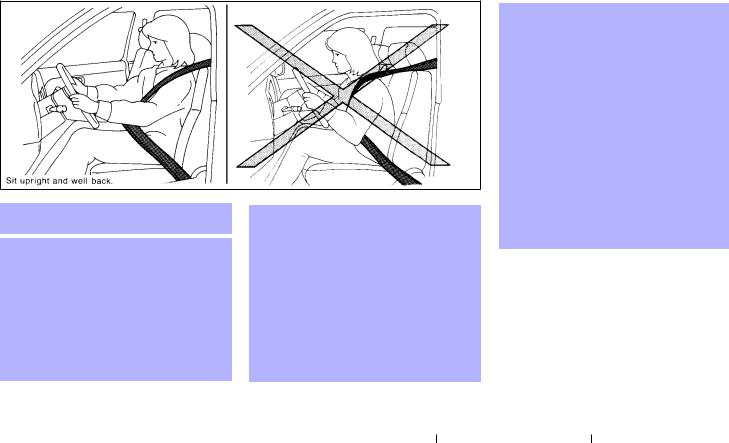
SSS0131
 WARNING
WARNING
OThe supplemental front air bags ordinarily will not inflate in the event of a side impact, rear impact, roll over, or lower severity frontal collision. Always wear your seat belts to help reduce the risk or severity of injury in various kinds of accidents.
OThe seat belts and the supplemental front air bags are most effective when
you are sitting well back and upright in the seat. Front air bags inflate with great force. If you are unrestrained, leaning forward, sitting sideways or out of position in any way, you are at greater risk of injury or death in a crash. You may also receive serious or fatal injuries from the supplemental front air bag if you are up against it when it inflates. Always sit back against the seatback and as far away as practical from the steering wheel
or instrument panel. Always use the seat belts.
OThe driver and front passenger seat belt buckles are equipped with sensors that detect if the seat belts are fastened. The air bag system monitors the severity of a collision and then inflates the air bags based on belt usage. Failure to properly wear seat belts can increase the risk or severity of injury in an accident.
OKeep hands on the outside of the steering wheel. Placing them inside the steering wheel rim could increase the risk that they are injured when the supplemental front air bag inflates.
1-12 Safety Ð Seats, seat belts and supplemental air bags
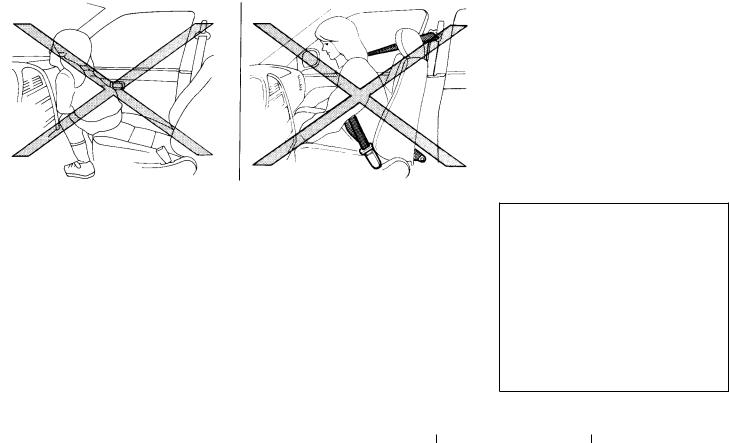
SSS0132 |
|
SSS0006 |
SSS0007
Safety Ð Seats, seat belts and supplemental air bags 1-13

SSS0008
SSS0009
SSS0099
SSS0100
 WARNING
WARNING
ONever let children ride unrestrained or extend their hands or face out of the window. Do not attempt to hold them in your lap or arms. Some examples of dangerous riding positions are shown in the previous illustrations.
OChildren may be severely injured or killed when the supplemental front air bags, side air bags or curtain sideimpact air bags inflate if they are not properly restrained. Preteens and children should be properly restrained in the rear seat if possible.
OAlso never install a rear facing child restraint in the front seat. An inflating supplemental front air bag could seriously injure or kill your child. For additional information, see ªChild restraintsº later in this section.
1-14 Safety Ð Seats, seat belts and supplemental air bags
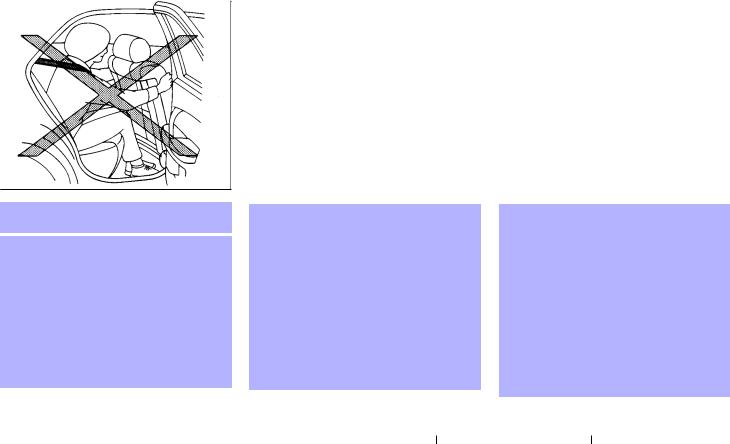
SSS0101
 WARNING
WARNING
Supplemental side air bag and curtain side-impact air bag:
OThe supplemental side air bag and curtain side-impact air bag ordinarily will not inflate in the event of a frontal impact, rear impact, rollover or lower severity side collision. Always wear your seat belts to help reduce the risk or severity of injury in various kinds of accidents.
SSS0188 |
|
SSS0140 |
OThe seat belts, the supplemental side air bag and curtain side-impact air bag are most effective when you are sitting well back and upright in the seat. The side air bag and curtain side-impact air bag inflate with great force. Do not allow anyone to place their hand, leg or face near the side air bag on the side of the seatback of the front seat or near the side roof rails. Do not allow anyone sitting in the front seat or rear outboard seats
to extend their hand out of the window or lean against the door. Some examples of dangerous riding positions are shown in the previous illustrations.
OWhen sitting in the rear seat, do not hold onto the seatback of the front seat. If the supplemental side air bag inflates, you may be seriously injured. Be especially careful with children, who should always be properly restrained.
Safety Ð Seats, seat belts and supplemental air bags 1-15
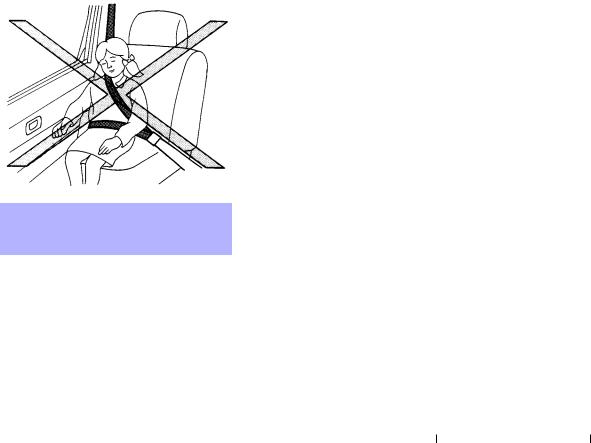
SSS0159 |
|
SSS0162 |
ODo not use seat covers on the front seatbacks. They may interfere with supplemental side air bag inflation.
1-16 Safety Ð Seats, seat belts and supplemental air bags
